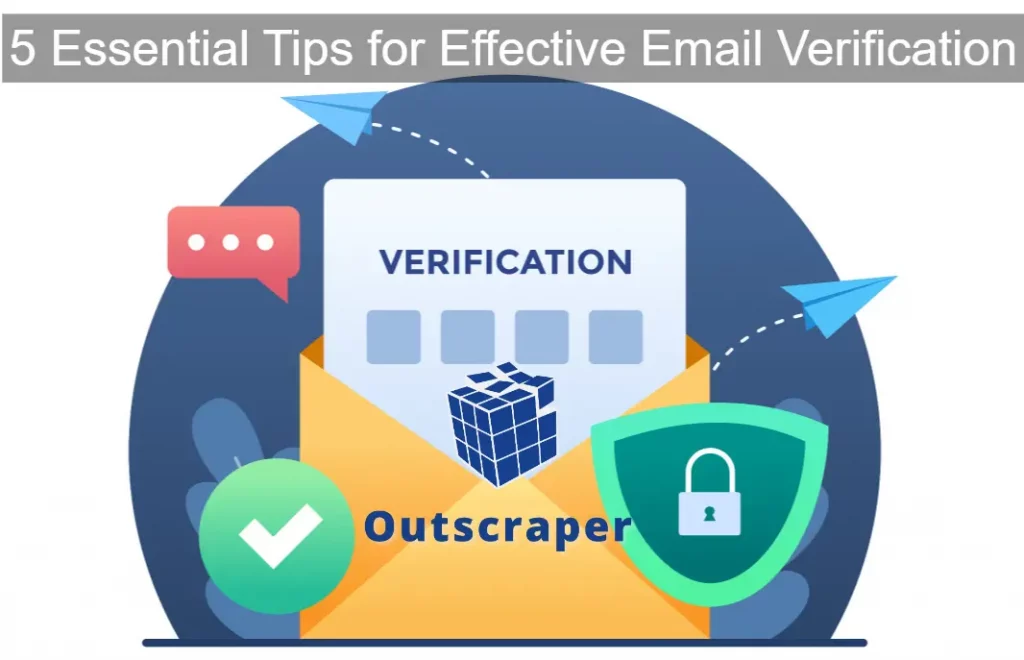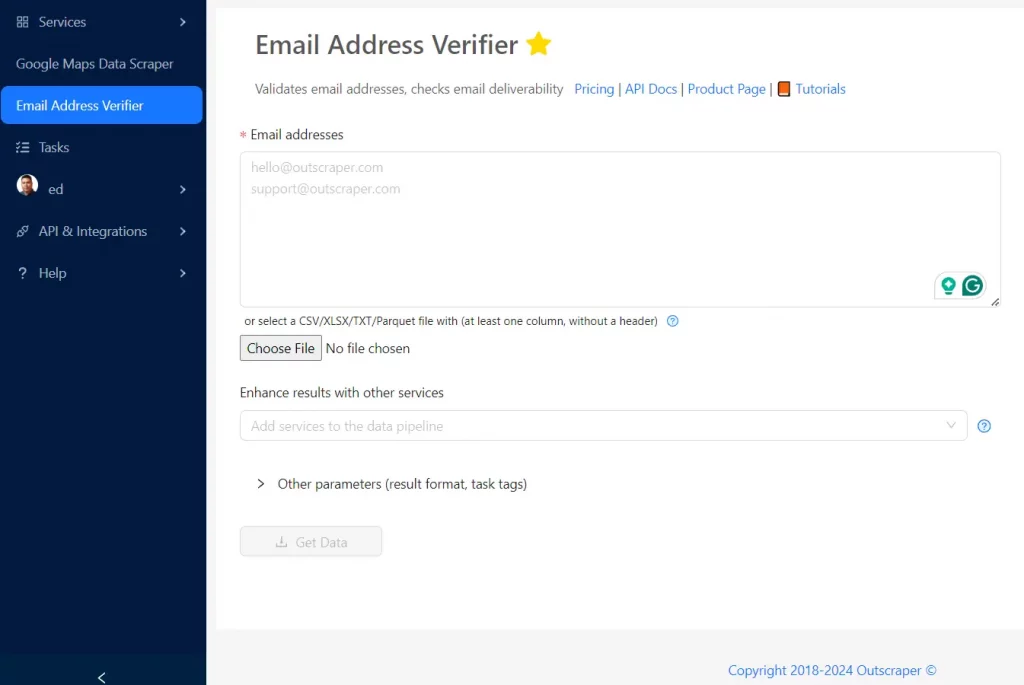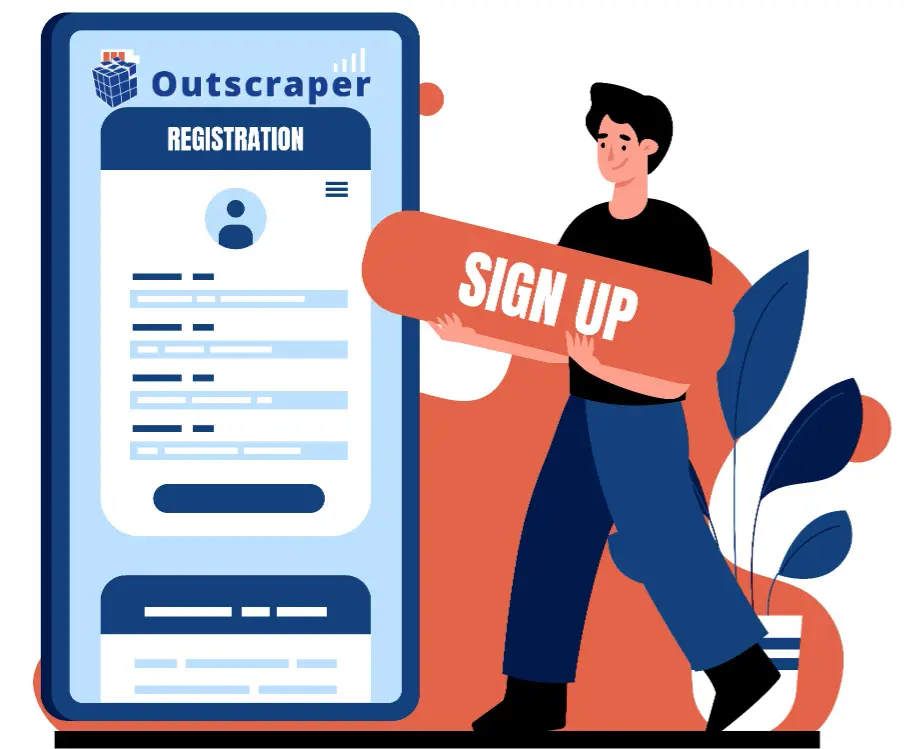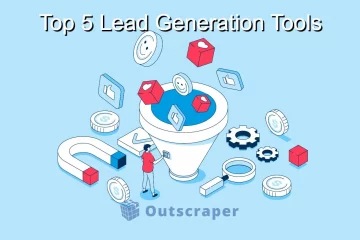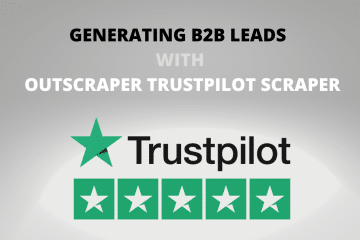Effective Email Verification to Maintain a Healthy and Deliverable Email Lists
Table of Contents
Introduction to Effective Email Verification
Effective email verification is essential in any company’s lead generation and marketing strategies. To keep your email list healthy and deliverable, run it through an email verification service tool at least quarterly. We will discuss the five essential tips for effective email verification that will keep your email list healthy and deliverable using the email verification tools from Outscraper.
An email list is one of the most essential marketing assets because of its impressive revenue-generating powers. However, we must overcome challenges so emails do not land in prospective customers’ spam folders. We must also keep our email list healthy and deliverable because it will affect our business reputation.
What is Email Verification?
Email verification is the process of checking, confirming, validating, and ensuring that emails are authentic and the message can reach and connect you to a real person with an active email address.
A verified and valid email address could boost customer engagement, which leads to more effective communication and marketing efforts. An engaged audience is more likely to interact with and respond to the content they receive.
Email verification is used for various purposes, such as reducing bounce rates, preventing fraud, enhancing data quality, and improving user experience. Aside from the usual uses, it is also important to note that email verification has many benefits.
Benefits of Email Verification
- Campaign Effectiveness Improvement: One of the benefits of email verification is that it improves campaign effectiveness. It will increase the likelihood of reaching your business’s right people and intended recipients.
- Minimal Costs: A verified email also reduces the costs associated with undeliverable emails, in addition to losing valuable time and wasted resources.
- Sender Reputation’s Protected: Verified emails help maintain a good sender reputation with email service providers.
- Higher Engagement: Verified emails will increase engagement rates with recipients.
General Email Marketing Statistics
- Global email users are expected to reach 4.48 billion by 2024 and grow to 4.59 billion by 2025, and they are predicted to reach 4.73 billion by 2026. (Mailbutler)
- 50% of all emails are opened on mobile devices, so companies need to optimize emails for mobile viewing. (Banklinko)
- The number of emails sent and received globally per day is projected to grow to 361.6 billion by 2024 and 392.5 billion by 2026. (Mailbutler)
- Apple Mail holds the largest market share at 58.07%, followed by GMail at 29.67%. (Mailbutler)
- 47% of email recipients check the subject line before deciding whether to open or not the email received. (Mailbutler)
- Email subject lines containing 20-60 characters featuring short and concise subjects perform better. (Smartinsights)
- Email marketing remains highly effective, with 62% of B2C and B2B marketers in the US having increased their budget over the past years. (Banklinko)
Overview of the Five Tips to Keep Your Email List Healthy
One crucial strategy in maintaining a successful email marketing campaign is ensuring your email list is healthy and deliverable. We will discuss five essential tips for effective email verification. The 5 Essential Tips for Effective Email Verification will keep your email list healthy and deliverable. We will discuss the importance and benefits of each tip, make some suggestions to implement, and provide some suggested tools to be used.
Five Essential Tips for Effective Email Verification
- Regularly Clean Your Email List
- Using Double Opt-In
- Verifying Email Address in Real-Time
- Monitoring Engagement Metrics
- Segmenting Your List
1. Regularly Clean Your Email List
Cleaning our email list to remove invalid and inactive email addresses is very important. Regularly removing invalid addresses is crucial. It will improve your deliverability, enhance engagement metrics and cost efficiency, improve sender reputation, and give you accurate reporting insight.
- Improved Deliverability: Emails are delivered to an active and valid address.
- Better Sender Reputation: ISPs monitor sender behavior and reputation, and high bounce rates, spam complaints, and low engagement can harm your sender’s reputation.
- Enhanced Engagement Metrics: Engaged and active recipients are more likely to open, read, and interact with your emails.
- Cost Efficiency: Keeping your email list clean reduces costs, ensuring you only pay for contacts that generate ROI.
- Accurate Reporting and Insights: Cleaning your email list ensures that your analytics and reporting reflect the actual performance of your campaigns.
Steps for Cleaning Your Email List
- Remove hard bounces: Hard bounces occur when emails are permanently undeliverable; you can use your ISP’s reporting tools to find and remove hard bounces.
- Correct Syntax Errors: Fix email addresses with common typos or formatting mistakes.
- Segment and Re-engage Inactive Subscribers: define inactivity by setting criteria, sending a re-engagement campaign, and removing non-responders.
- Filter out unsubscribers: You should respect unsubscribe requests because they are crucial for maintaining a positive relationship with your subscribers, their trust, and your reputation.
- Eliminate duplicates: To eliminate duplicates, use your ESPs’ tools to find and merge duplicate emails and consolidate data so that all contact information is in a single entry per subscriber.
Tools, Techniques, and Methods in Automating Email Cleaning
Automating the email cleaning process involves using specialized tools and techniques to ensure your list remains valid, engaged, and up-to-date.
Tools for Email Cleaning
- Outscraper: Offers real-time email verification and email validation. It helps remove invalid and spammy emails to ensure they are active and deliverable.
- Hunter.io: Primarily known for finding email addresses and offers email verification to clean your email list.
- ZeroBounce: Offers email validation, spam trap detection, and abuse email checker.
2. Use Double Opt-In
The double opt-in process is a two-step method for confirming email subscriptions. It ensures that only genuinely interested and valid subscribers are added to your email list.
The process involves two steps: an initial setup and a subsequent confirmation, both of which the subscribers must complete. In the initial setup, subscribers provide their email addresses and a checkbox for consent. The next step is for confirmation; an automated email is sent to the provided address, and a confirmation link is provided to confirm their subscription.
Aside from the two-step method, there is also a final confirmation by clicking the confirmation link and a welcome email, which will be sent to engage the new subscribers further. Double Opt-in in Email strategies has benefits, such as improved deliverability, higher engagement rates, regulatory compliance, and reduced spam complaints. It will also ensure genuine interest and reduce spam.
Best Practices for Implementing Double Opt-In
Implementing a double opt-in process involves clear communication, engaging confirmation emails, and mobile optimization. Start by informing subscribers about the need for confirmation and setting expectations for the content they will receive. Ensure the confirmation email has a clear message, a prominent call to action, and matches your brand’s design. Follow up promptly with a welcome email after confirmation to keep subscribers engaged.
You can also track metrics like open and click-through rates to monitor performances and use A/B testing to optimize emails. Simplify the unsubscribe process, choose reputable email service providers, and ensure compliance with regulations like GDPR and CAN-SPAM. These practices help maintain a high-quality, engaged email list, enhancing deliverability and engagement.
3. Verify Email Addresses in Real-Time
What is the importance of real-time verification?
Real-time verification is essential for maintaining the quality and effectiveness of email marketing campaigns. By verifying email addresses as they are collected, businesses can ensure validity, which improves email deliverability, prevents invalid signups, and reduces bounce rates.
It will also enhance the sender’s reputation with ESPs, ensuring the emails reach the recipients’ inboxes rather than being filtered as spam. Real-time verification also enhances engagement rates by maintaining a clean and engaged email list, leading to higher open and click-through rates.
Tools for Real-Time Email Verification
- Outscraper
- ZeroBounce
- NeverBounce
- Hunter.io
- BriteVerify
4. Monitor Engagement Metrics
Tracking key engagement metrics in your email list is crucial for evaluating the effectiveness of your email marketing campaigns.
Key Metrics to Monitor
- Open Rate: measures the percentage of recipients who open your email, indicating the effectiveness of subject lines and the overall interest of your audience.
- Click-Through Rate (CTR): The percentage of recipients who click on links within your email shows your email content’s engagement level and effectiveness.
- Conversion Rate: Tracks the percentage of recipients who complete a desired action, such as purchasing, resulting in ROI.
- Bounce Rate: The percentage of emails that could not be delivered.
- Unsubscribe Rate: Percentage of recipients who unsubscribe from your mailing list, indicating how well your content meets expectations.
- Spam Complaint Rate: Percentage of recipients who mark your email as spam.
- List Growth Rate: It shows the Rate at which your email list is growing, helping you gauge your effectiveness.
- Engagement Over Time: Tracks changes in recipient engagement over time, helping identify long-term trends.
- Email Sharing/Forwarding Rate: The percentage of recipients who share or forward your emails.
- Return on Investment (ROI): Measures the financial effectiveness of your email marketing efforts.
Analyzing and Acting on Key Metrics:
If we want to optimize our email marketing campaigns, we must analyze and act on key engagement metrics. Open rates indicate the effectiveness of subject lines and overall audience interest. Low open rates can be improved by A/B testing subject lines, personalizing them, and optimizing send times.
Enhancing Click-Through Rates (CTR) involves improving CTA placement, optimizing content for relevance, and testing different email formats. Improving Conversion rates also requires clear CTAs, optimized landing pages, and offering valuable incentives. Bounce rates highlight issues with email deliverability and list quality. Regularly cleaning the list, implementing double opt-in, and monitoring the sender’s reputation can help reduce bounce rates.
High unsubscribe rates suggest content misalignment with audience expectations, which can be addressed by segmenting the audience, optimizing email frequency, and gathering feedback from unsubscribers.
To mitigate Spam Complaint Rates, ensure email relevance, provide easy unsubscribe options, and verify consent. The list growth rate measures email list expansion and can be boosted by enhancing signup forms, offering incentives, and promoting signup opportunities.
Tracking engagement over time helps identify trends, necessitating content refresh and re-engagement campaigns. Email sharing/forwarding rates indicate content value, which can be increased by encouraging sharing and creating shareable content. Finally, ROI assesses financial effectiveness, requiring ongoing campaign optimization, cost monitoring, and focusing on high-performing strategies.
5. Segment Your Email List
Email list segmentation is the process of dividing an email list into smaller, more targeted groups based on specific criteria such as demographics, behaviors, interests, or past interactions.
Email segmentation allows marketers, business owners, and entrepreneurs to tailor their messages to meet different segments’ unique needs and preferences, enhancing the relevance and effectiveness of their email campaigns or strategies.
Some of the Benefits of Email List Segmentation
- Increased Engagement
- Improved Deliverability
- Higher Conversion Rates
- Efficient Resource Allocation
- Personalized Customer Experience
- Better Insights and Analytics
How to Segment Your Email List
Email list segmentation involves dividing your email subscribers into smaller, targeted groups based on specific criteria such as demographics, behaviors, and interests. This allows for more personalized and relevant email campaigns.
- Demographic Segmentation: Based on age, gender, job title, etc., to tailor content to different audience segments.
- Geographic Segmentation: Based on location to promote region-specific events or offers.
- Engagement Level Segmentation: This is based on how often subscribers engage with your emails, allowing you to re-engage inactive users or reward loyal ones.
- Purchase History Segmentation: Based on past purchases to recommend similar products or offer discounts.
- Behavioral Segmentation: Based on purchase history, email engagement, and browsing behavior to target users with relevant messages.
- Lifecycle Stage Segmentation: Based on where subscribers are in the customer journey, such as new or lapsed customers.
- Psychographic Segmentation: Based on interests, values, and lifestyle to create personalized content.
Tools for Email Segmentation
- Mailchimp
- Hubspot
- Campaign Monitor
Conclusion
Effective email verification is vital for maintaining a healthy email list, enhancing deliverability, and improving overall email marketing performance. By implementing regular list cleaning, using double opt-in, verifying emails in real-time, monitoring engagement metrics, and segmenting their email lists, businesses can optimize their email campaigns and achieve better results.
These practices ensure compliance with regulations and foster stronger relationships with subscribers, ultimately leading to increased customer engagement and higher ROI. It would help if you noted that one of the most essential tools you could utilize for effective email verification is the Email Verifier and Email Validator tools provided by Outscraper. You can even bulk verify your email list using the tools from one of the most reliable web scraping apps today, Outscraper.
Try Outscraper for free with a monthly renewable Free Tier.
